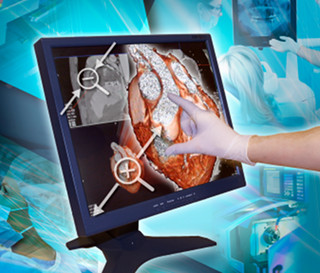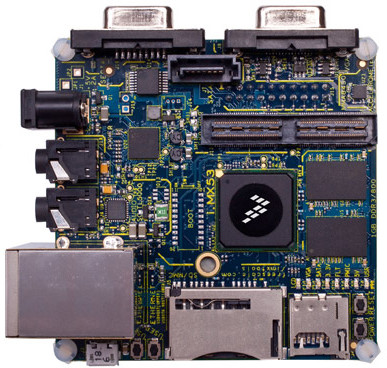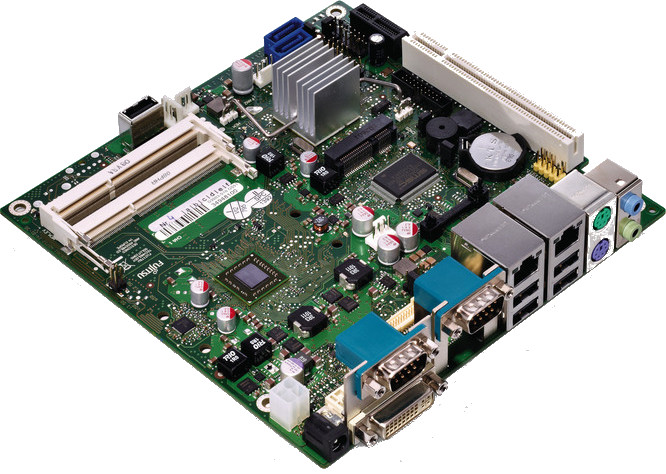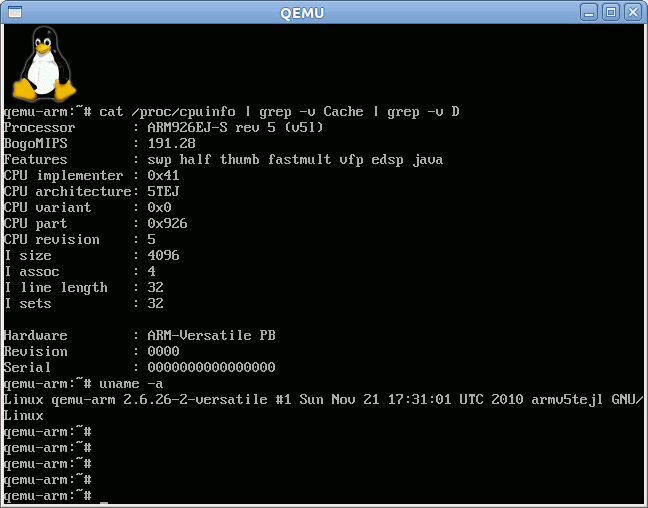Toshiba developed a proprietary algorithm for multi-touch resistive touchscreen and they exhibited a demo at Embedded World 2011. The hardware is based around Toshiba TMPA900 (ARM926EJ-S core running at 200 Mhz) and runs embedded Linux. This type of system is aimed at home appliances (washing machine, refrigerator…), industrial and medical applications and can be used with a pen, stylus or gloved hand. For example, a doctor wearing gloves would be able to use multi-touch gestures on such screens whereas it would not be possible on capacitive touchscreens or standard resistive touchscreens. It was not specified but I suppose that technology would only support 2 points since they only showed two fingers gesture in the demo. This should not be a problem for the type of application. An another advantage of this solutions is that it brings multi-touch technology to cost sensitive industrial applications. The technology is still under development and […]
Amahi 6 (Home Digital Assistant) and Amahi Sync Released Today.
Amahi is an open source home digital assistant (HDA) running on Fedora. It is basically a server to manage all your media files (like a NAS), backup your PC’s data and host some private web applications (calendar, wiki, …) with people on your LAN. Amahi is available on several platforms such as Intel and AMD x86 processors and embedded platforms such as Intel Atom (ECOPC N.1) and Marvell Sheeva ARM processor (Sheevaplug). They’ve released their latest version Amahi 6 today. Here’s what they say about it: Amahi 6.0: Reliability, Reliability, Reliability! Amahi 6.0 brings a plethora of upgrades, reliability fixes and features, and better hardware support, courtesy of Fedora 14. Here are some of the highlights in this release (see the Amahi 6.0 release notes for all the details as well as the upgrade guide from Amahi 5/Fedora 12). Online Synchronization, Server Alerts and Premium Plans! The Amahi Sync and […]
Low Cost Freescale i.MX53 (Cortex A8) Development Board
Possibly inspired by Texas Instruments low cost Beagleboard (OMAP 3 – 129 USD) and Pandaboard (OMAP4 – 179 USD) and the large following in the development community, Freescale announced its own “Quick Start Development Board” based on i.MX53 for a cost of 149 USD. i.MX53 QSD Board Hardware Description Listed Hardware Features of the i.MX53 Quick Start Development Board: Processor i.MX53 1 GHz ARM Cortex-A8 Processor Power management IC 1 GB DDR3 memory Display LVDS connector VGA connector Parallel LCD add-on card (via expansion connector) HDMI add-on card (via expansion connector) Audio SPDIF output via HDMI add-on card Freescale SGTL5000 audio codec Microphone jack Headphone jack Expansion Connector Enables parallel LCD or HDMI output Camera CSI port signals I2C, SSI, SPI signals Connectivity Full-size SD/MMC card slot microSD card slot 7-pin SATA data connector 10/100 Base-T Ethernet port Two High-Speed USB host ports Micro USB device port Debug JTAG connector […]
Databases for Linux Embedded Systems: Berkeley DB and SQLite
Embedded systems often need to use database to store contact information, EPG data and more. Many Linux systems use MySQL, however such a large database management system may not always be appropriate for embedded systems. Hence, there are lightweight database management systems implementation that are especially suited to embedded systems by their binary footprint, memory footprint and CPU requirements. If you want to develop in C in Linux and your requirement is to have no (or little) license to pay in your application, you could consider Oracle Berkeley DB or SQLite among others. Oracle Berkeley DB (previously Sleepycat Berkeley DB) is described as follows: Berkeley DB enables the development of custom data management solutions, without the overhead traditionally associated with such custom projects. Berkeley DB provides a collection of well-proven building-block technologies that can be configured to address any application need from the hand-held device to the datacenter, from a […]
Linaro Development Board “Snowball” by ST Ericsson
ST Ericsson unveiled a development board based on Nova A9500 (dual ARM Cortex A9 processor and MALI 400 GPU) at MWC 2011 called Snowball (or SKY-S9500-ULP-CXX) for the embedded Linux community and professional developers. This board was designed by CALAO Systems and can be pre-ordered on their website for 200 USD (SKY-S9500-ULP-C11 / Software Development Kit – SDK) or 300 USD (SKY-S9500-ULP-C01 / Production development Kit – PDK). The difference between the SDK and PDK is that the former has no expansion connectors, no battery backup for RTC and only support serial over USB port (for Linux console). First, some pictures with description of the snowball development board. The full documentations for Snowball development board can be found in Calao Systems File Repository, where you’ll get the bottom and top assembly diagrams for both C01 and C11, the major components datasheet, documentation and some photos. The specifications of the boards: – […]
AMD Embedded G-Series mini-PC, motherboard and thin client
AMD announced its embedded processor G-Series at CES 2011. Here are some products that will be soon available based on this platform. Futjisu Mini-ITX mainboards – models D3003-S1 and D3003-S2 The D3003-S1 motherboard will feature an AMD Single-Core T44R (1.2GHz/9W) and the D3003-S2 an AMD Dual-Core T56N (1.6GHz/18W). Both models will have an onboard ATI graphics card with VGA, DVI, LVDS (D3003-S1 only) and diplayport (D3003-S2 only) outputs, HD Audio, dual GbE LAN, serial ATA III RAID, mSATA socket support, USB 2.0, 8 Bit GPIO connector and be designed for fanless operation. Mass production of the boards will start in April 2011. Check the preliminary specifications for details. CompuLab’s fit-PC3 mini-PC Compulab already manufactures the fit-PC2 and fit-PC2i based on the Intel Atom platforms running Linux, Windows XP and Windows 7. The Israel-based company will embed AMD Embedded G-Series processor in its latest fit-PC3 mini-PC. This “miniature fanless industrial PC” […]
Emulate an ARM Plaform with QEMU on Ubuntu 10.10
When developing software for embedded systems, you may need to support multiple architectures such as arm, mips, x86, powerpc, alpha etc.. but you may not have the hardware required on hand to test them. This is where QEMU – a processor emulator – comes to the rescue. In a way, QEMU is similar to VirtualBox, VMWare or Citrix Xendeskop except it can support multiple architectures. I’ll show how to run Debian Lenny ARMEL in QEMU on a computer running Ubuntu 10.10 (aka Ubuntu Maverick Meerkat). QEMU (Qemu-kvm) Installation First install qemu-kvm and qemu-kvm-extras (the latter contains qemu-system-arm): sudo apt-get install qemu-kvm qemu-kvm-extras Let’s check qemu version: jaufranc@CNX-TOWER:~/edev$ qemu –version QEMU PC emulator version 0.12.5 (qemu-kvm-0.12.5), Copyright (c) 2003-2008 Fabrice Bellard Debian ARM Installation in QEMU Create a directory to store the required files for the emulator and download the Debian Lenny ARMEL kernel (vmlinuz) and debian installer rootfs (initrd.gz): mkdir […]
Ziilabs ZMS-05 and ZMS-08 SDK and Development Boards
Ziilabs (originally 3DLABS) is Singapore company, subsidiary of Creative Technology, that provides media application processors for consumers electronics and has offices in the UK, China, USA and Singapore. Ziilabs Media Processors Overview Ziilabs has two media processors: ZMS-05 – A Low Power HD Programmable Media Rich Processor based on two ARM9 core (ARM9-EJS) mainly aimed at smartphones and tablets with the following media capabilities: High compute density SIMD architecture High resolution – decode to 1080p / 720p encode Simultaneous video encode/decode at D1 Wide rage of optimised CODECs and APIs Accelerated OpenGL ES 3D graphics Hardware compositing Advanced image processing 8 GFlops programmable compute ZMS-08 – A HD Media Rich Applications Processor based on an ARM Cortex A8 running @ 1GHz mainly aimed at media players, set-top boxes and digital signage solutions with the following media capabilities: Blu-ray Quality 1080p H.264 Video Decode 1080p H.264 Video Encode 720p H.264 Video […]









